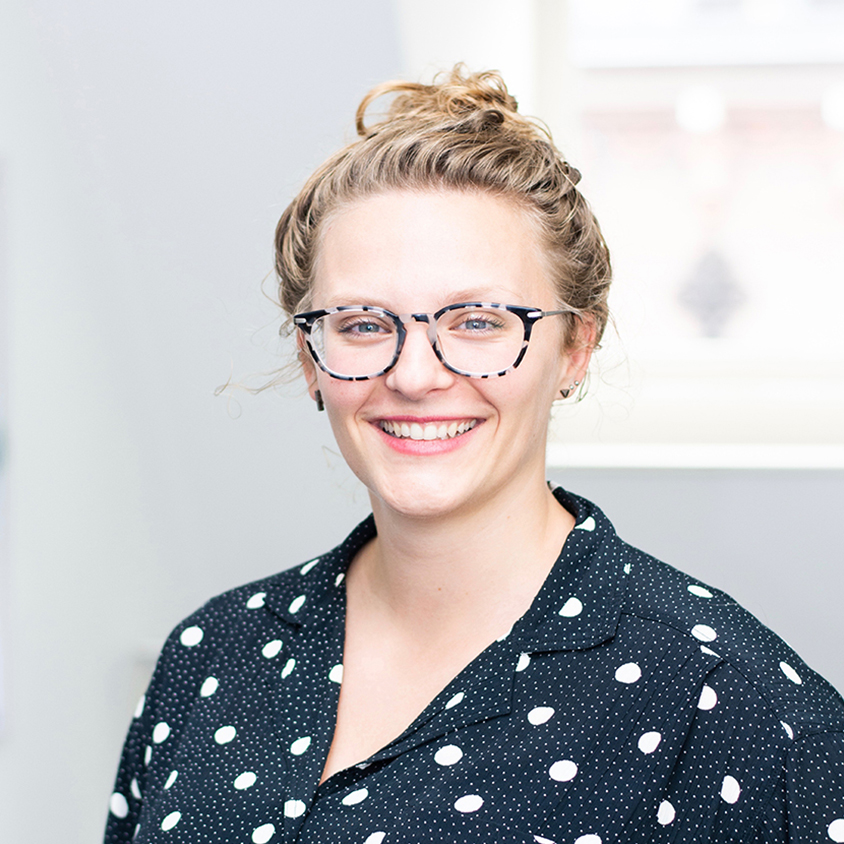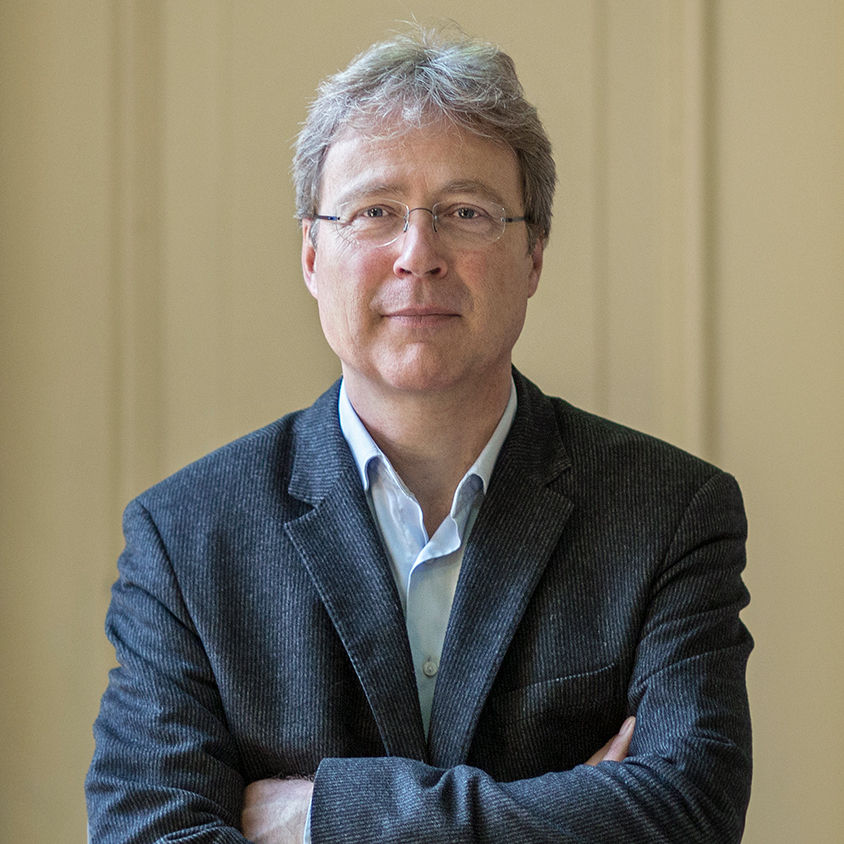‘Perseverance and eagerness are the best predictors of a successful PhD candidate’

A train trip to Switzerland was when old dog Ted Sanders (56) and young blood Jet Hoek (29) really got to know each other. At the start of Hoek’s PhD track in the spring of 2014, the professor of Language Proficiency had had to spend a lot of time on administrative tasks, so while the two had spoken regularly, they hadn’t had a chance to have long, in-depth conversations yet. In the meantime, Hoek had diligently started her work, and although Sanders thought Hoek to be a confident person when they’d first met, the young researcher actually often doubted whether she was on the right track. During their trip through the spectacular landscape, she asked and received feedback, and the two had an in-depth conversation about the research Hoek had been working on for a year. Sanders thought he’d be able to relax the rest of the way – but it soon turned out that Hoek had no interest in making small talk. Instead, she fired question after question about their research at the professor.
The research Jet Hoek did for her PhD fitted in a larger research project for which Ted Sanders, along with colleagues in Switzerland, had obtained an grant from the Swiss equivalent for NWO. The international project focused on improving machine translations at text level. The practical implementation of the research was the responsibility of two universities in Switzerland, Sanders explains. In her dissertation, Hoek studied the coherence relations people make between sentences. To that end, Hoek studied different translations of a single text. “We used a corpus (a collection of texts, ed.) with speeches and meetings of the European Parliament. There was an English source text which was translated to French, German, Spanish, and Dutch. I was curious how translators indicate transitions. Is it done implicitly or explicitly? How do you translate the English word ‘but’ to Dutch? Do you use ‘maar’, ‘hoewel’, ‘toch’, or something else?”
With a given level of intelligence, eagerness and perseverance are the best indicators of success
It wasn’t self-evident that Ted Sanders would hire Jet Hoek as a PhD candidate when they first met. Hoek was a linguist, and she lacked experience in setting up and conducting experiments. “Some people I knew had also applied,” Sanders said, “and others were from exactly the subdiscipline the project was about. Jet came out of nowhere for me. Plus, she was from a different discipline.” During their conversation, it quickly turned out that Sanders was dealing with a clever student who showed an incredible eagerness. Additionally, he’d heard from her supervisor in Nijmegen how much Jet wanted to do her PhD in this project. Sanders took the road less travelled and hired Hoek: “With a given level of intelligence, eagerness and perseverance are the best indicators of success.”
Hoek felt the PhD position fit her ‘quite well’. “I saw that it didn’t flawlessly connect to my background, but I was very interested in the topic. At the start of my PhD, I did have to read up on things, especially the more cognitive sides of the research. I didn’t have experience, for instance, in setting up and conducting experiments, but the project did include an experimental approach.”
It had been a coincidence that the paths of Jet and Ted had crossed in the first place. Hoek had started out as a medical student, because she’d been convinced she wanted to become a doctor. She was wrong: it quickly turned out medicine was not her thing. She switched to American Studies and English. “In the first year, I had courses in Linguistics, and that caught my interest. I eventually did a Master’s in Linguistics in Nijmegen.” Through her network, she hears about a PhD position in Utrecht in the Modern Project, an abbreviation that stands for Modeling Discourse Entities and Relations for Coherent Machine Translation.
What are people actually saying in a conversation, or what exactly are they writing?
In April 2014, Hoek started the PhD track, which culminated in a dissertation on September 21, 2018: ‘Making sense of discourse. On discourse segmentation and the linguistic marking of coherence relations’. “The study was about relations people make between sentences. Look, for instance, at the sentence: ‘When Ted entered, Jet exited the room.’ As a reader, you quickly find a causal link and fill in the rest yourself. For instance: Jet is probably leaving quickly because she doesn’t like Ted. Even though it doesn’t explicitly say that. So there’s a field of tension there, and the question is how automated translations deal with that,” Hoek says.
Jet Hoek’s PhD project ties in with a general empirical development in linguistics which also applies to text science or discourse studies in which Jet and Ted work. For a long time, only a purely theoretical approach was used: Armchair linguistics, Sanders says jokingly. “You may think you know how people make connections between sentences, but often, we aren’t really sure what actually happens, and that’s why we study that through corpora of language use. What are people actually saying in a conversation, or what exactly are they writing? Describe what you see and hear in the same texts in different languages and analyse the patterns. And that’s exactly what Jet has done.”
Hoek’s research clarified which coherence relations tend to be made explicit by speakers or writers and which relations the reader or listener has to make for themselves. Jet combined this method of corpus studies with original texts and translations with linguistic-psychological reading experiments, in which reading time and eye movements were registered to see how easily readers were able to make certain connections between sentences. For that reason, Ted says, her study is exemplary in its methodology. She’s delivered valuable insight into the question of when and how coherence relations are marked explicitly. Eventually, thanks to this study, automated translations can be improved upon.
I want to continue my career in science and for that, it’s vital that I teach as well
During Jet Hoek’s PhD track, Ted Sanders was – next to his work as professor – first head of the largest department of Humanities: Languages, Literature and Communication, and later vice dean of the faculty of Humanities. From his current position, Sanders and his colleagues at other faculties fight for appointing at least two supervisors to each PhD candidate. “Imagine things don’t click between the PhD candidate and the supervisor. In December 2019, the Board for the Conferral of Doctoral Degrees determined that each PhD track at the UU employs the ‘four-eye-principle’, which is a good solution. That way, you won’t have that inaccessible bubble of that one PhD candidate with the one supervisor,” Sanders explains. Jet Hoek adds that in her case, there was even a third supervisor aside from the daily supervision by Jaqueline Evers. “Not on a daily basis, but Sandrine Zufferey in Bern knew a lot about corpus research, which was very valuable to me.”
At the moment, Hoek has a position in Cologne many postdocs would be jealous of. She’s expanding on her PhD research and once again studies coherence relations in texts. Still, starting in February, she’s voluntarily giving up 30 percent of her research time to be able to teach in Nijmegen. “I want to continue my career in science and for that, it’s vital that I teach as well. I lack that experience at the moment.” Sanders agrees that the career ladder in science is pyramid-shaped, but also points out the already enormous list of scientific publications Hoek has, which should offer her more opportunities. Sanders talks about the article they published together with four others. He was the first author of the article, and Jet was constantly chasing him: “Ted, the article has to be finished by next week. Will you be able to write that closing paragraph?” There’s no coincidence anymore in Hoek’s career, is what he wants to say.
 |  |
| Jet about Ted: “Ted taught me the importance of networking. He’s very good at it, and it doesn’t come as naturally to me. Ted is an open person, so young researchers who haven’t met him personally yet, can approach him for a chat at a conference. (Picture Marloes Herijgers) | Ted about Jet: “I’ve supervised and coached many researchers, teachers, and administrators. I can say that I understand people. Jet’s project taught me that I can do better: my understanding of the development of young researchers isn’t always correct. Jet seemed very confident from the start, but I later learned that wasn’t the case at all. That made sense, because she’d started in such a complicated track, with several foreign partners to boot. She needed more support from my side than I’d been giving at that time, because I thought: ‘things are going fine’. I still feel that Jet did very well at the time. (picture Ed van Rijswijk) |